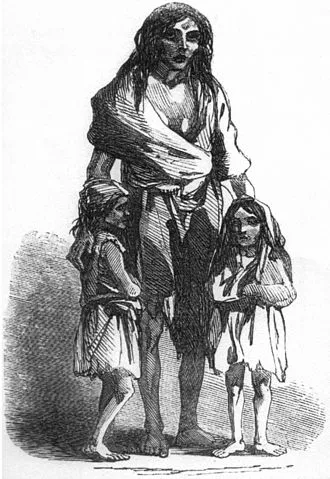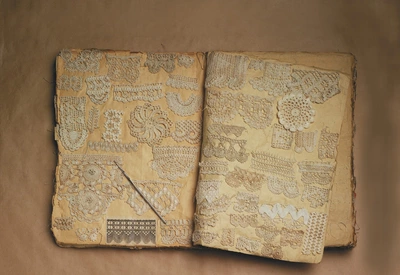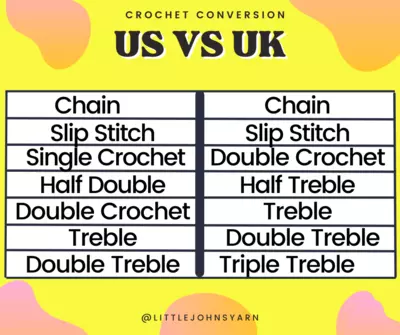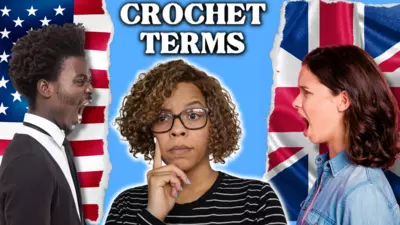What influenced the differences between UK & US crochet terms? Sometime in the 1880s, crochet terms for the basic stitches became more standardized in Britain, even though American publishers began to use what we now recognize as U.S. crochet terminologies. British terms were still used in many U.S. publications until after World War I.
However, the basic stitch we call single crochet in America, for instance, is called double crochet in the United Kingdom. As you can see, discrepancies in stitch terminology such as this can make a huge difference in end results.
Don’t run away yet, there are theories to its origin. In this article, we are going to discuss why US & UK crochet terminology change.
When did British and American crochet terms diverge?
Once again, nobody knows. But what I have found is that it wasn’t an instant diversion. Many patterns published in America during the 1800s and early 1900s also used terms from standards we refer to today as UK terminology.
If you are a crocheter who loves to try out vintage patterns, please be aware of what crochet terminology they are using.
Crochet is a craft that has been around for centuries. You can even find traces of crochet’s distant ancestors going back to, 6500 BC. Find out more about crochets’ long history HERE.
We aren’t going that far back today. These two countries have very different crochet terms, and they must have diverged at some point in history, right?
Let’s start our crochet history lesson in the 1800s, when crochet was commonly done in Europe at the time. In the United Kingdom, even Queen Victoria found this pastime comforting. In the last year of her long life, She crocheted eight scarves for members of her forces fighting in South Africa.
The 1800s saw a large migration of Europeans to America. This was due to the Industrial Revolution in Europe, which led to a shortage of jobs and food.
In Ireland, during the Potato Famine(1845-1850), poor Irish men, women, & children would sell “Irish Crochet” to help make ends meet. The famine caused more than one million deaths from starvation and forced over one million people to leave Ireland.

The United States was seen as a land of opportunity and freedom during this time period. This was also the prime opportunity for crochet to spread to the United States
Remember, at this time there were no standardization.

In Pauline Turner’s book, Crochet Lace, she explains that crochet evolved in the mid-1800s as a way to mimic labor-intensive lace. Yarners saw examples and recreated the look of these laces.
They shared their work using small samples and sometimes using sketches, diagrams, and charts. Often the craft was transmitted person to person, rather than by written verbal instructions.
Can you see how crochet is starting to get lost in translation?
Why are U.S. and UK crochet terms different
Like dialects, crochet has a healthy amount of slang that takes some getting used to, but crocheters tend to be all too happy to share what they mean.
Comment down below some of your favorite crochet slang or abbreviations
(example)
Here is a non crochet example of how words mean different things depending on your geographic location.
For example, in the US, wearing your “pants” outside is normal. But if you are walking around in your pants in the UK, you may get arrested.
Pant= Underwear in the UK
Can you see how easily words and phrases can be lost in translation?
So the two sets of crafters on either side of the Atlantic use stitch names that they were familiar with.
That’s all fine & dandy until patterns started to be printed and sold in the different countries.
That meant the names of stitches needed to be standardized for each country. Thus began the biggest crochet cluster %&^%^* of all history, Crochet standardization.
When did crochet terms become standardized?
According to Antique Pattern Library, starting in the 1820s, antique and vintage basic crochet terms varied from publication to publication. It didn’t become standardized until well into the 20th century.
Sometime in the 1880s, crochet terms for the basic stitches became more standardized in Britain, even though American publishers began to use what we now recognize as U.S. crochet terminologies. British terms were still used in many U.S. publications until after World War I.
How did the crochet terms get their name?
One theory is that the UK terms refer to the number of loops you have on the hook after you draw a loop through the next stitch. In US crochet terms, it refers to the number of times you move the hook to complete the stitch.
For example, after you’ve drawn the yarn through the stitch in the previous row, you have two loops on your hook or a double loop, hence the United Kingdom’s double crochet. In the US, to complete the stitch, you only have to draw the yarn through both loops on the hook once, which is a single movement, hence single crochet.
Which crochet terms are the same?
We use some of the same terms, but they are completely different stitches. The chain and slip stitch is the same in the US & UK, but that’s where it stops. In the Uk they don’t even have a single crochet & and in the US a half treble just sounds weird?
British & Australian (they use UK crochet terminology too) friends, forgive me. It’s all in good fun. Who am I to judge. I drink wine from a box(video).
What’s the difference between UK and US crochet terms?
The main difference between the two is the starting point. They are basically an offset of one another.
After the Chain & slip stitch, US terms start with single crochet, while UK terms begins with the double crochet stitch. The next step-up is the US double crochet, called treble stitch in the UK.
Learning the stitches isn’t difficult after you do some research and practice.
How do I know if a pattern is written in US or UK terms?
With the internet, it was suddenly very apparent that we use the same terms to refer to different stitches. Most patterns are kind enough to let you know if it’s written in US or UK crochet terminology. But even I as a crochet designer can forget to add this in.
(I can’t lie, I always forget)
According to Craftsy, “One way to tell if it’s an American pattern is to look for single crochets. British terms don’t use single crochet at all, so if you see single crochet used in the pattern, it’s likely written in American crochet terms. You can also check for other wording in the pattern.”
The half treble crochet stitch (htr), doesn’t exist in US terminology, only in UK terminology. You get the idea
Crochet Stitches US vs UK Chart

Conclusion
If you want your mind even more blown, crochet stitches US vs UK aren’t the only crochet terminology! There are also Japanese, Chinese, Croatian, Scandinavian, South American and other terms as well, not to mention universal symbol crochet.
In my opinion, crocheters did not realize that they were creating a problem for future pattern followers. They just talked about their craft the best they could. It wasn’t about making patterns on a colossal scale.
It was just a handy craft that they used in their everyday life.
Standardization helps to some degree, but each country usually has its own standards, just look at the difference between spellings in American English and UK English. Even the word standardized is spelled differently.
If you enjoyed the article, then check out my Full History of Crochet!
Happy Crocheting!
Psst… If you love free crochet patterns (I know…duh) make sure to follow my blog on Facebook, Instagram, or Pinterest! Littlejohn’s Yarn posts original designs and free crochet pattern round-ups regularly for you to enjoy.


